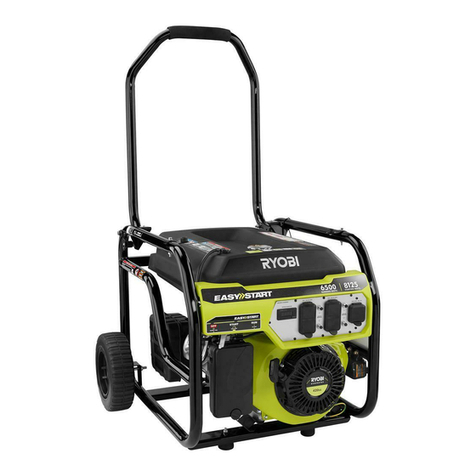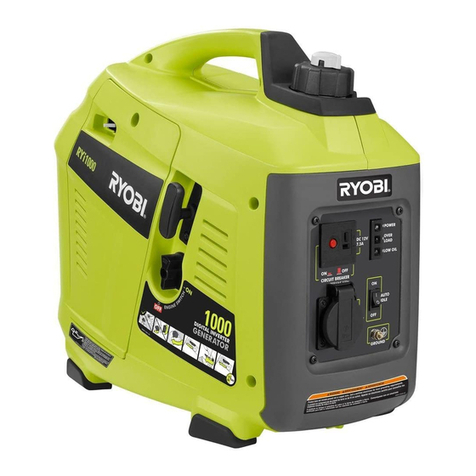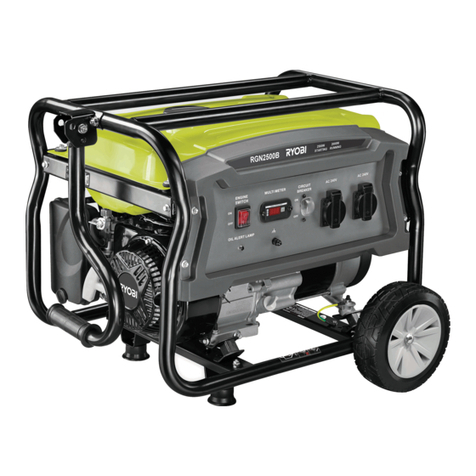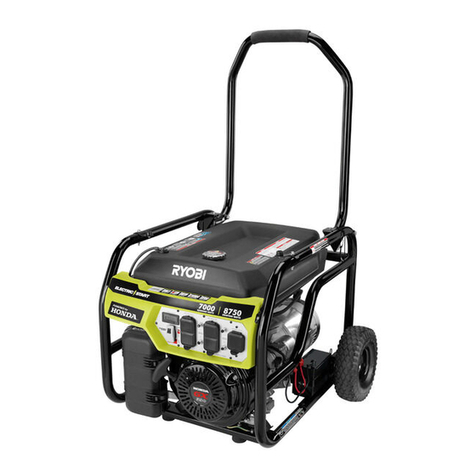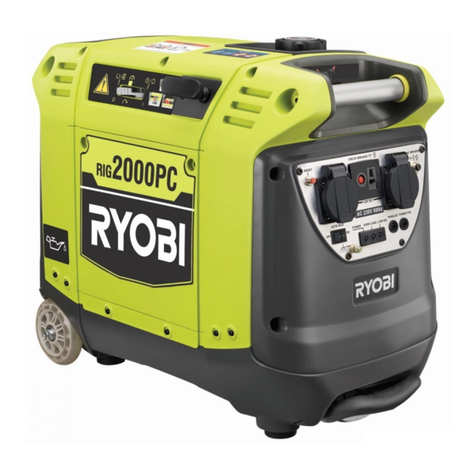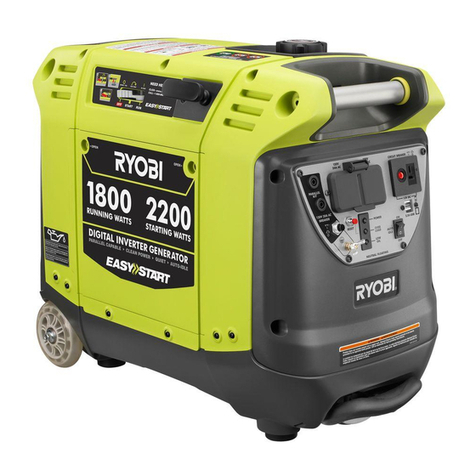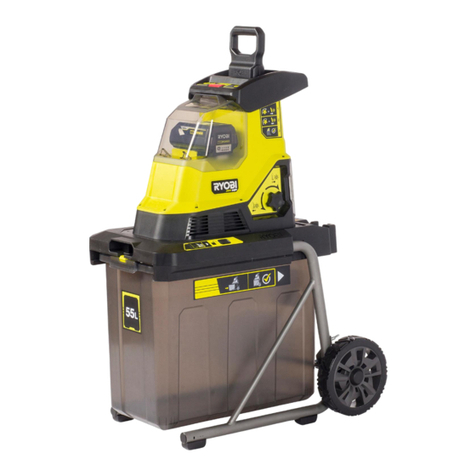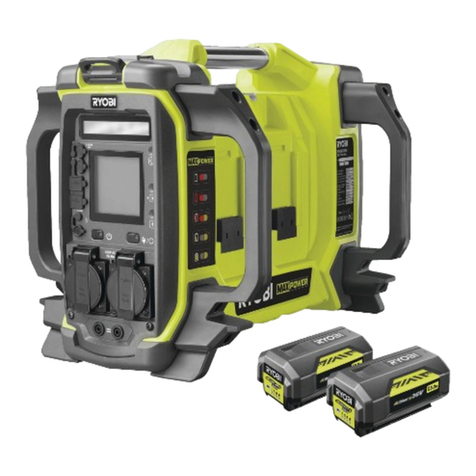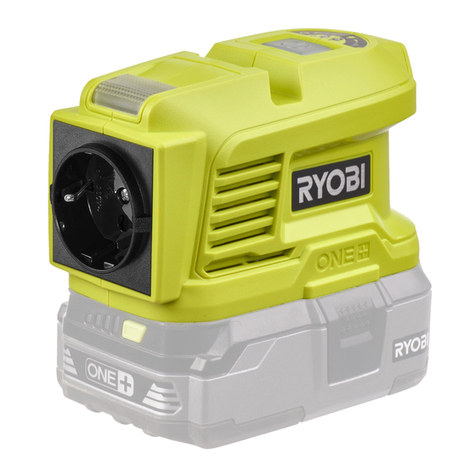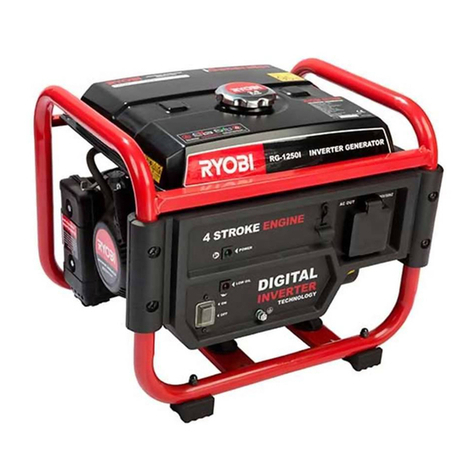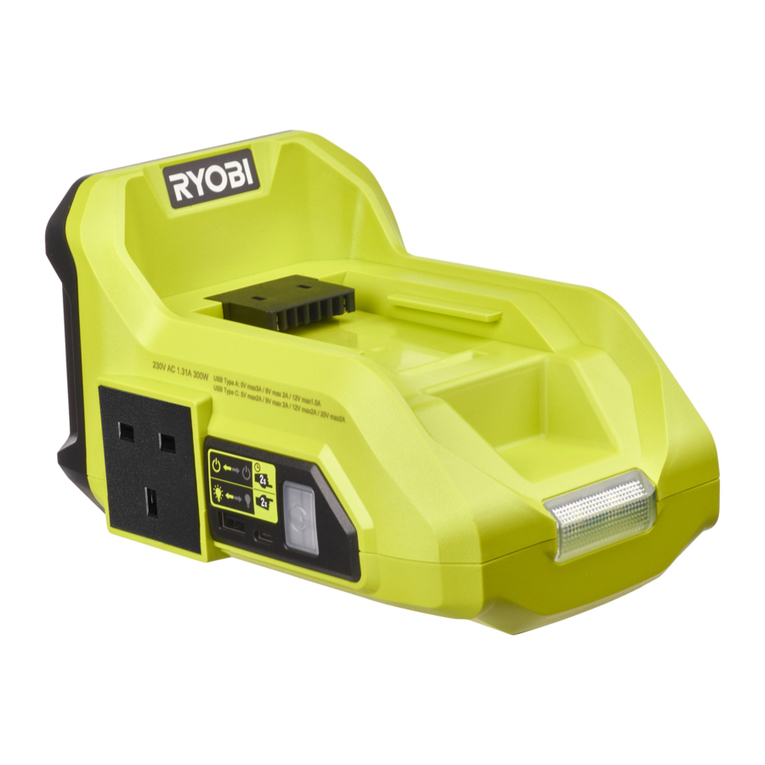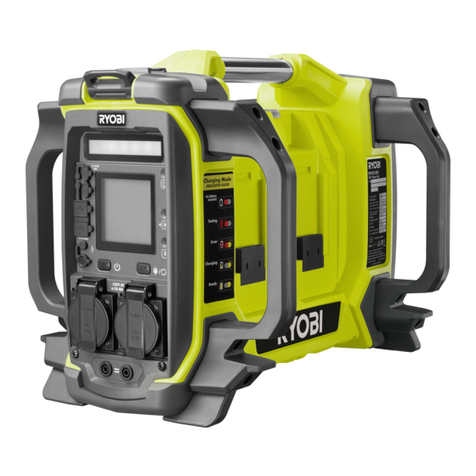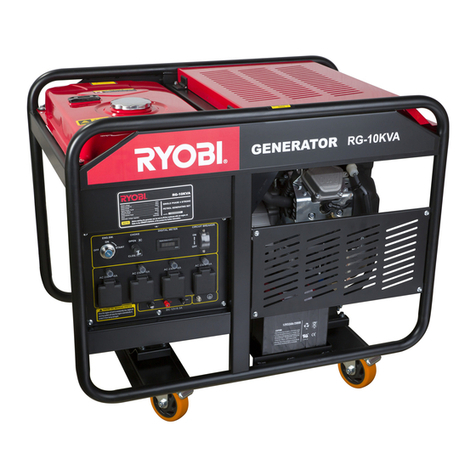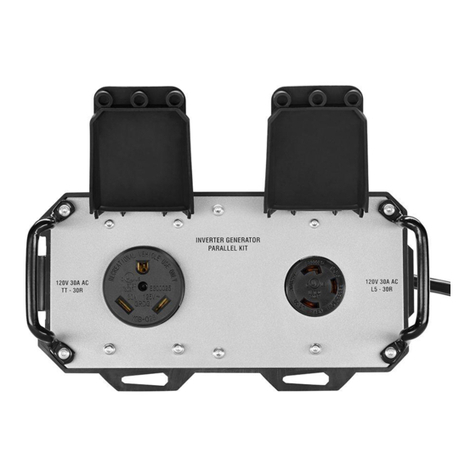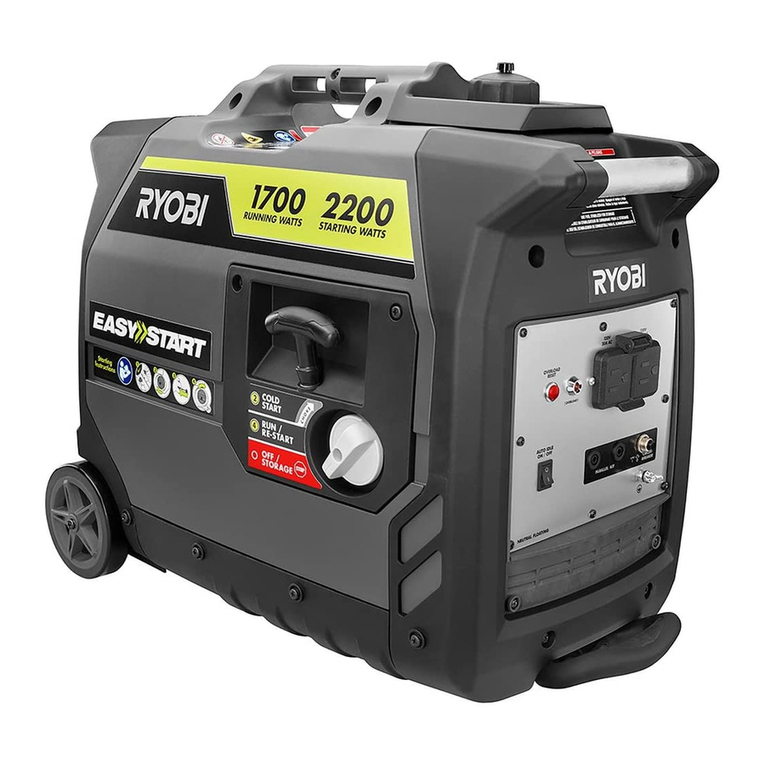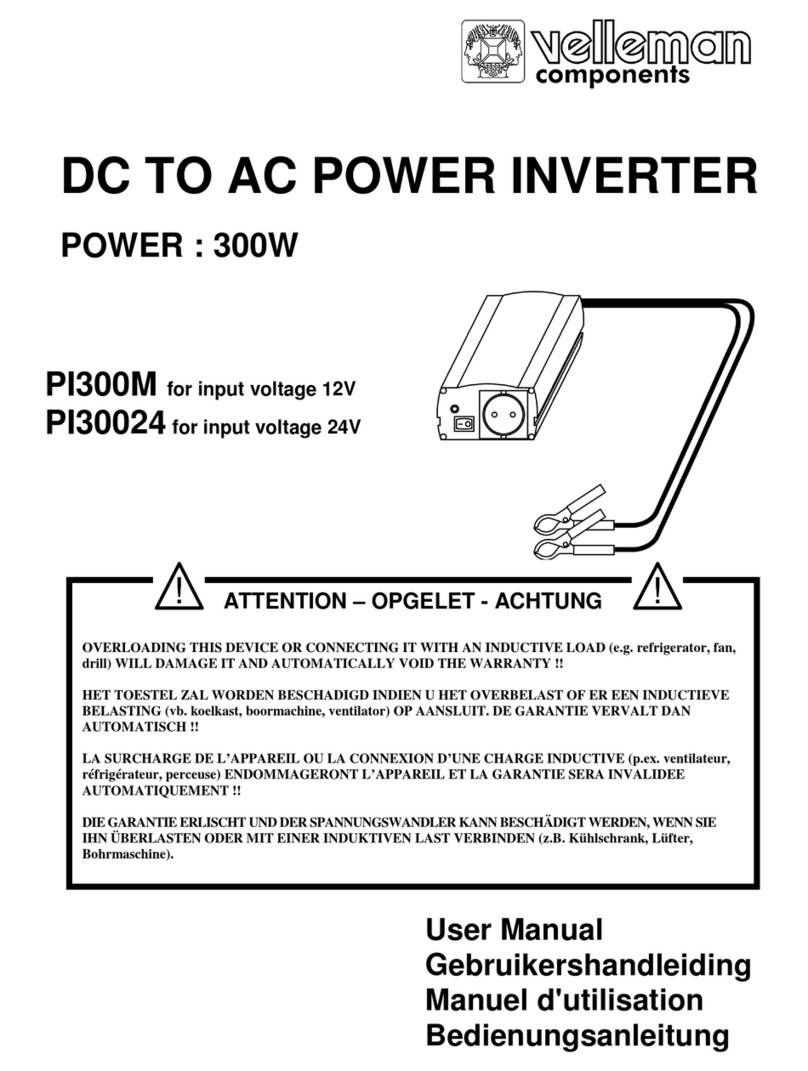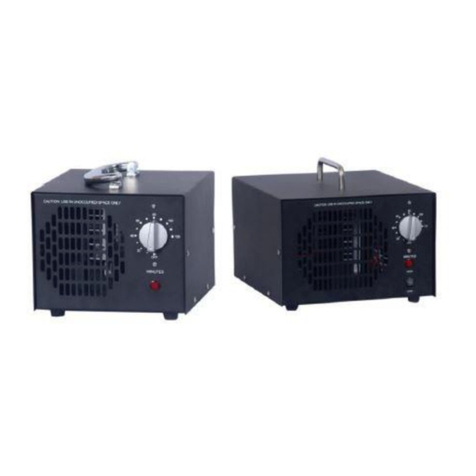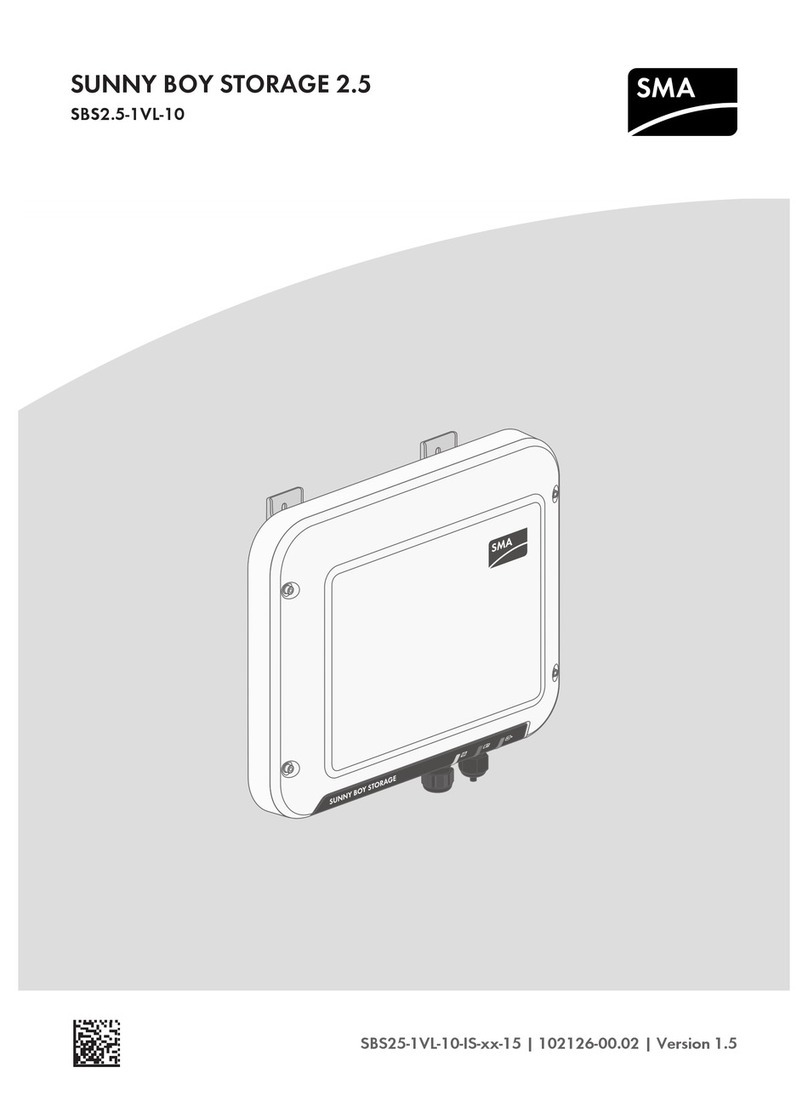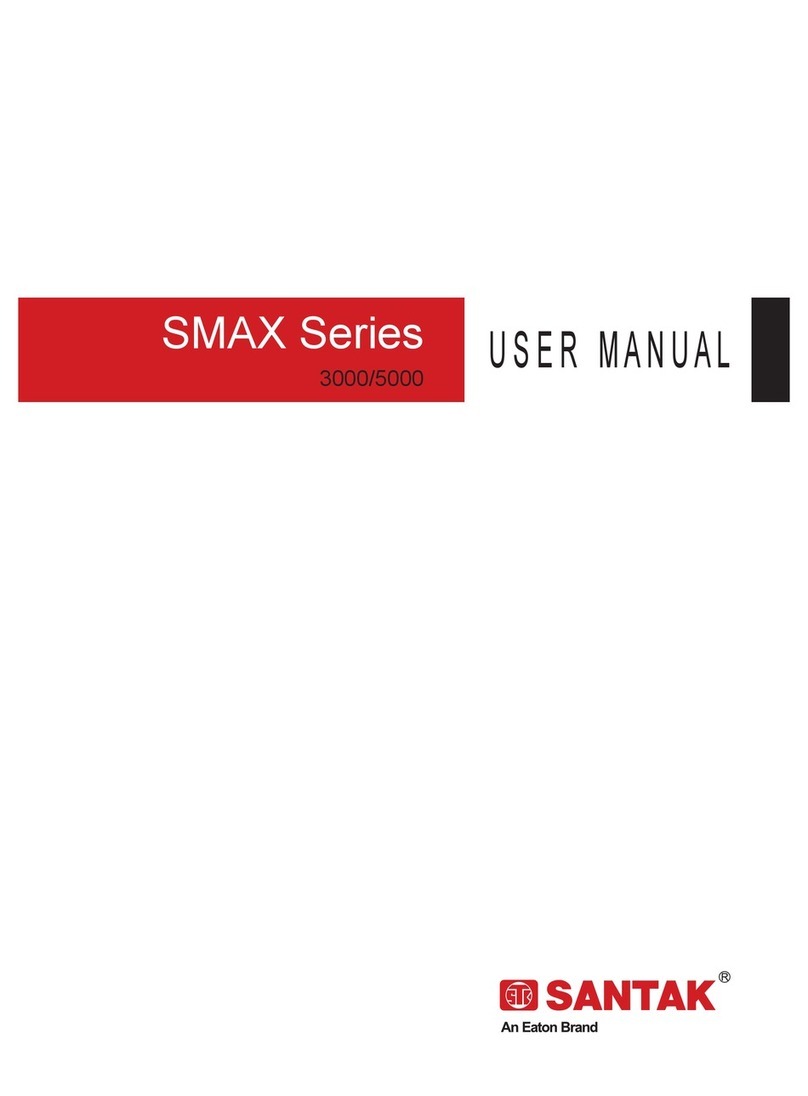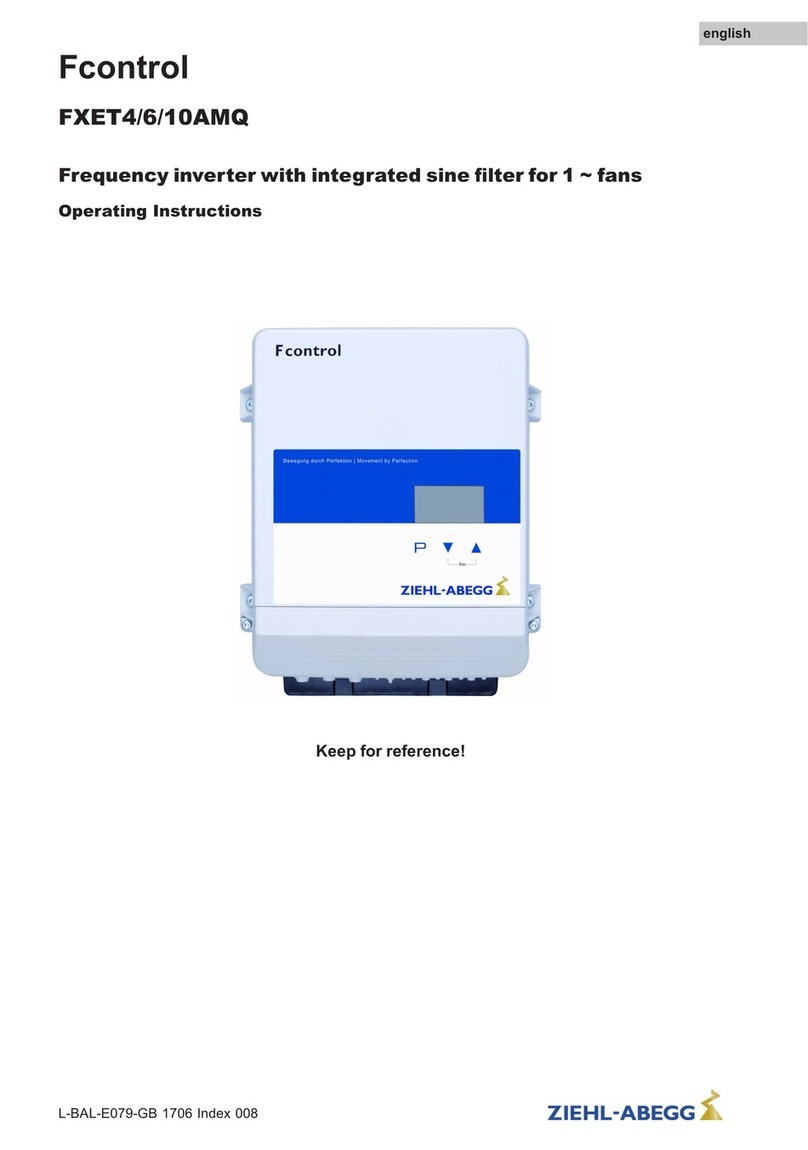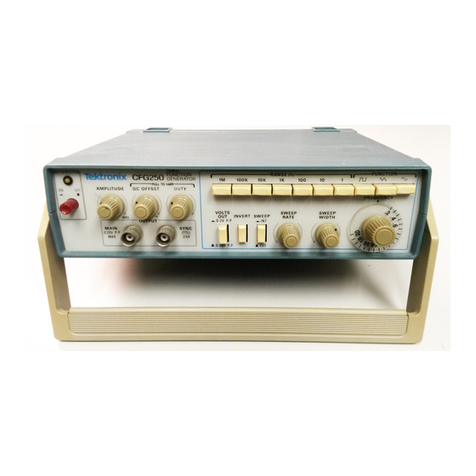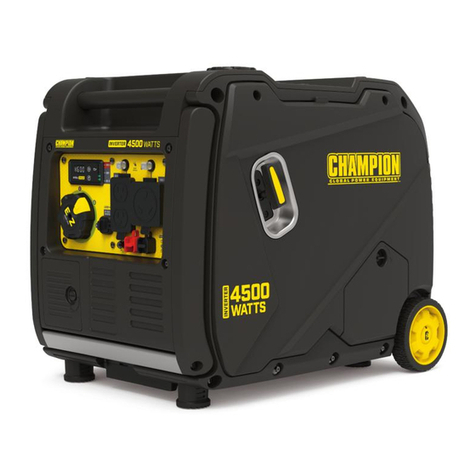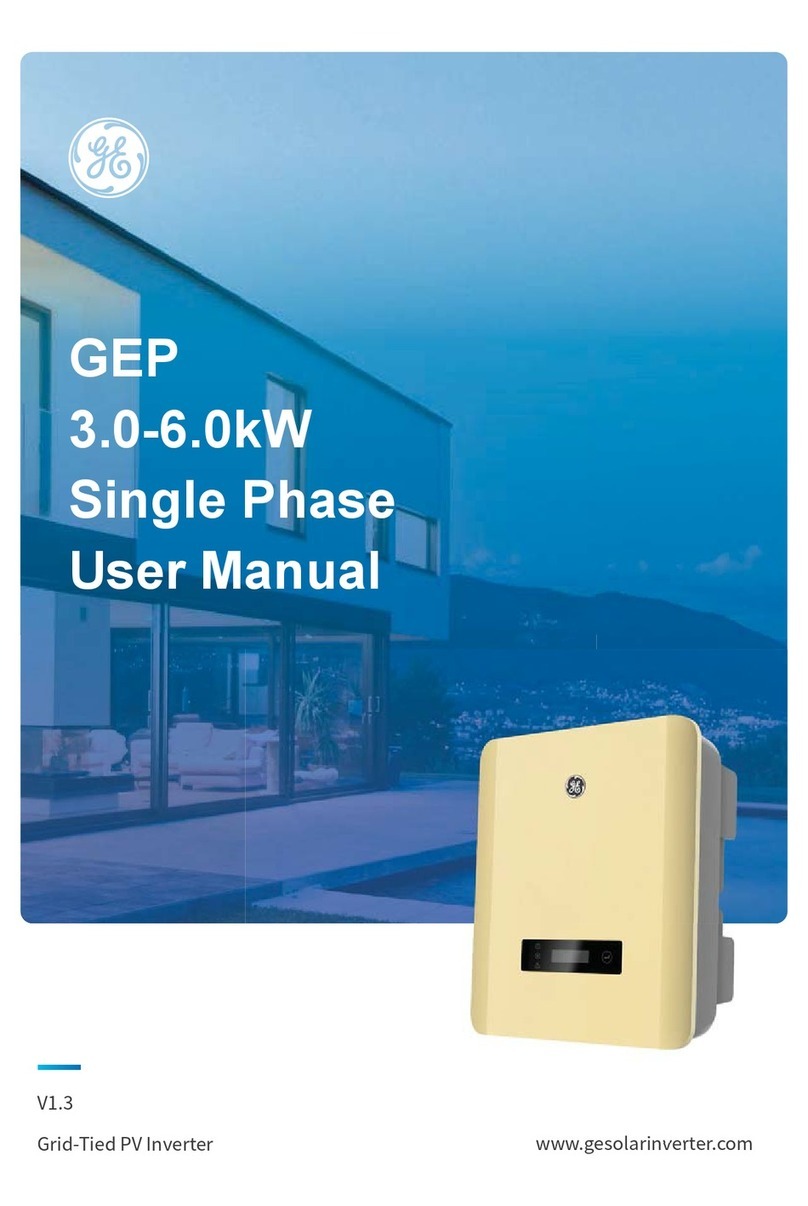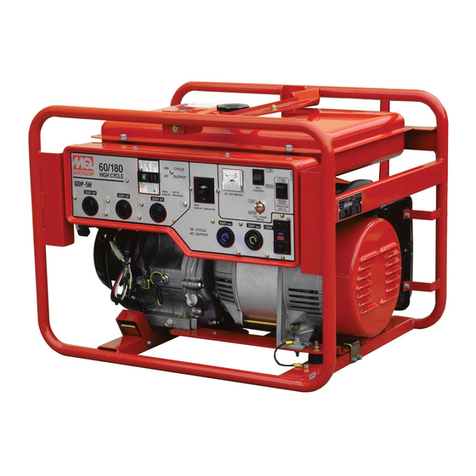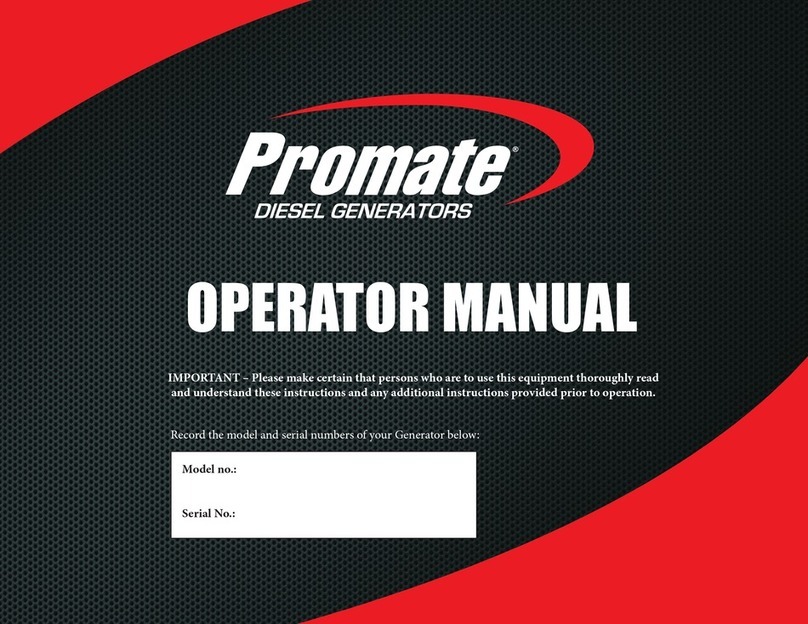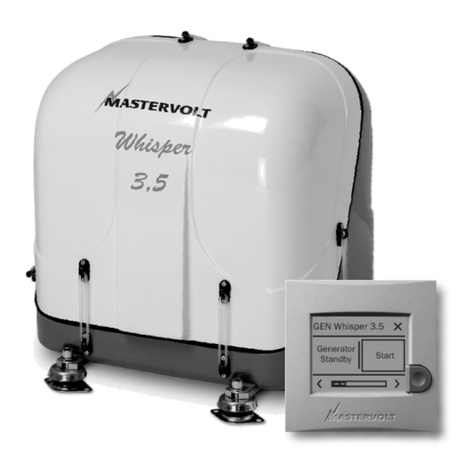
Page 3 — English
DANGER:
Carbon Monoxide. Using a generator indoors CAN KILL
YOU IN MINUTES.
Generator exhaust contains high levels of carbon mon-
oxide (CO), a poisonous gas you cannot see or smell. If
you can smell the generator exhaust, you are breathing
CO. But even if you cannot smell the exhaust, you could
be breathing CO.
Never use a generator inside homes, garages, crawl-
spaces, or other partly enclosed areas. Deadly levels
of carbon monoxide can build up in these areas. Us-
ing a fan or opening windows and doors does NOT
supply enough fresh air.
ONLY use a generator outdoors and far away from
open windows, doors, and vents. These openings
can pull in generator exhaust.
Even when you use a generator correctly, CO may
leak into the home. ALWAYS use a battery-powered or
battery-backup CO alarm in the home.
If you start to feel sick, dizzy, or weak after the generator
has been running, move to fresh air RIGHT AWAY. See
a doctor. You could have carbon monoxide poisoning.
DANGER:
If you smell propane gas, shut off propane to the genera-
tor at the propane cylinder. If odor continues, keep away
from generator and immediately call your propane gas
supplier or your fire department.
WARNING:
Read and understand all instructions. Failure to follow
all instructions listed below could result in electrocution,
fire, and/or carbon monoxide poisoning, which can cause
death or serious injury.
WARNING:
In some applications, National Electric Code requires
generator to be grounded to an approved earth ground.
Before using the ground terminal, consult a qualified
electrician, electrical inspector, or local agency having
jurisdiction for local codes or ordinances that apply to
the intended use of the generator.
WARNING:
To reduce the risk of fire or explosion, do not store an
unconnected propane cylinder in the vicinity of the gen-
erator or any other appliance.
WARNING:
To reduce the risk of fire or explosion, propane cylinders
must be stored outdoors out of reach of children and
must not be stored in a building, garage, or any other
closed in area.
SAVE THESE INSTRUCTIONS
This manual contains important instructions that should be
followed during installation and maintenance of the genera-
tor and batteries.
Do not connect to a building’s electrical system unless
the generator and transfer switch have been properly
installed and the electrical output has been verified by
a qualified electrician. The connection must isolate the
generator power from utility power and must comply with
all applicable laws and electrical codes.
Do not allow children or untrained individuals to use this
unit.
Do not use or install generator in or on boats, recreational
vehicles, camper trailers, or motor homes.
Do not start or operate the engine in a confined space,
building,near openwindows,orin otherunventilatedspace
where dangerous carbon monoxide fumes can collect.
Carbon monoxide, a colorless, odorless, and extremely
dangerous gas, can cause unconsciousness or death.
Keep all bystanders, children, and pets at least 10 feet
away.
Wear sturdy and dry shoes or boots. Do not operate while
barefoot.
Do not operate generator when you are tired or under the
influence of drugs, alcohol, or medication.
Keep all parts of your body away from any moving parts
and all hot surfaces of the unit.
Do not touch bare wire or receptacles.
Do not use generator with electrical cords which are worn,
frayed, bare, or otherwise damaged.
Do not operate or store the generator in rain, snow, or
wet weather.
Remove propane cylinder and restrain the unit from mov-
ing before transporting in a vehicle.
Provide a plastic sheet or absorbent pad below the gen-
erator to catch any drips of lubricant when transporting.
Generators vibrate in normal use. During and after the
use of the generator, inspect the generator as well as
extension cords and power supply cords connected to
it for damage resulting from vibration. Have damaged
items repaired or replaced as necessary. Do not use plugs
or cords that show signs of damage such as broken or
cracked insulation or damaged blades.
For power outages, permanently installed stationary gen-
erators are better suited for providing back-up power to
IMPORTANT SAFETY INSTRUCTIONS
